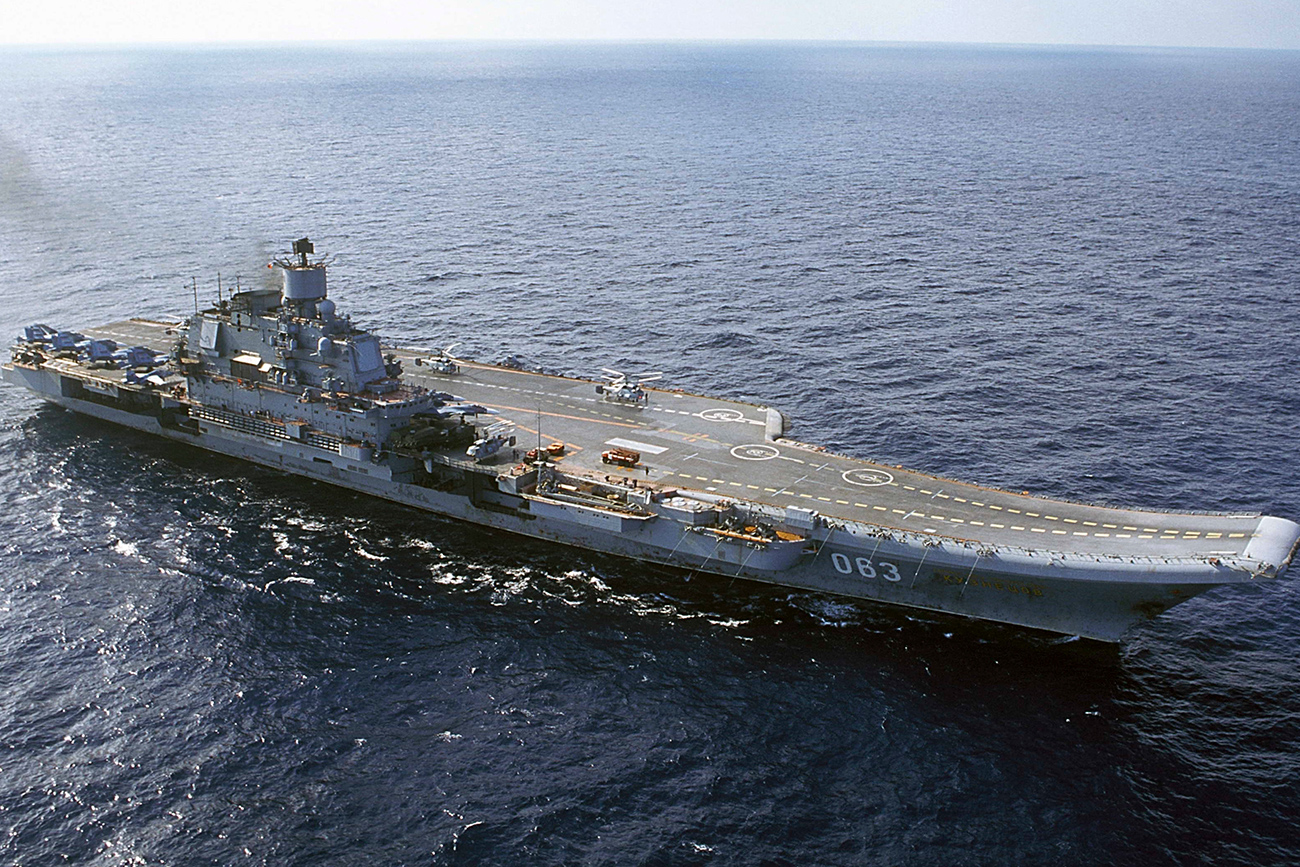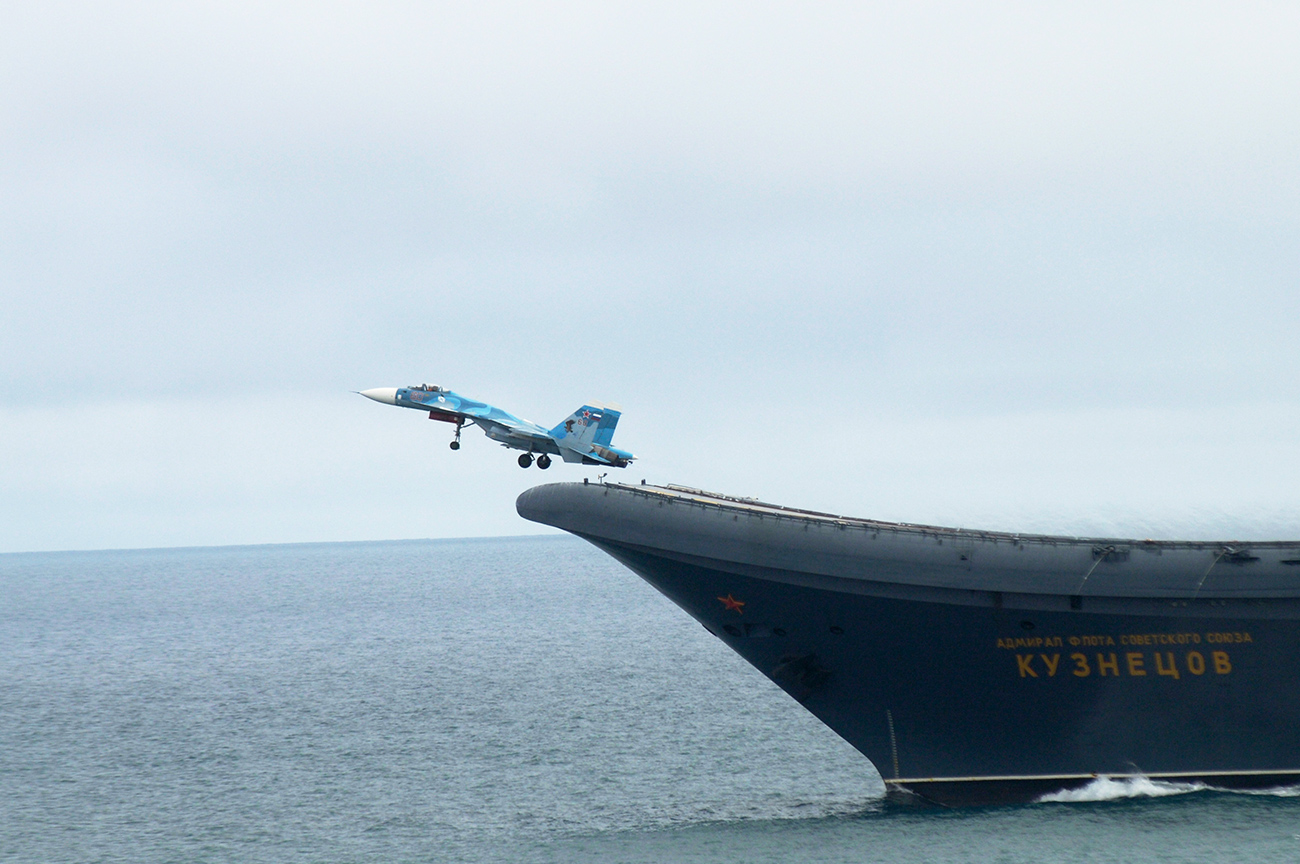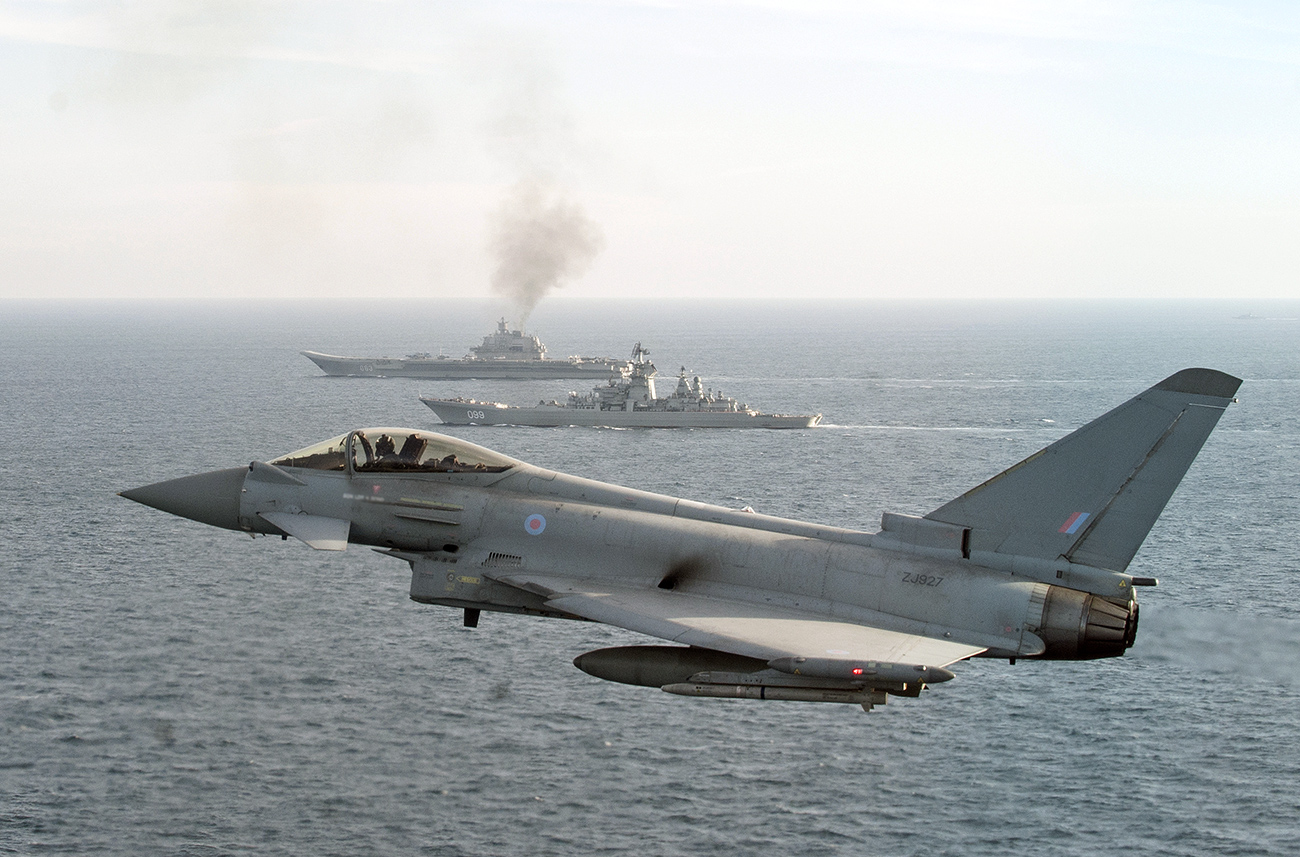How much did Russia spend on the Admiral Kuznetsov mission?

The use of aviation and ships from the Admiral Kuznetsov aircraft carrier group in the battle for Aleppo cost the Russian budget some $170 million, says a media report. Experts claim, however, that a real waste of budget resources would have been keeping the ship at dock in a Russian port. Photo: Russian aircraft carrier Admiral Kuznetsov.
APThe use of aviation and ships from the Admiral Kuznetsov aircraft carrier group in the battle for Aleppo cost the Russian budget between five and 10 billion rubles ($170 million), analysts RBC daily claim (in Russian).
The estimate is based on open sources; some of the sums drew criticism from military analysts RBTH spoke with. But experts claim that a real waste of budget resources would have been keeping the ship at dock in a Russian port.
Combat flights
Russian pilots carried out 420 flights from the ships of the aircraft carrier group, according to the Russian Defense Ministry.
The costs related to a carrier-borne fighter's fuel and ammunition are comparable to the use of a land-based fighter, writes (in Russian) RBC, citing former Aerospace Forces Commander Army General Peter Deinekin.
Considering the fact that the cost of one flight may be 3.5 million rubles ($60,000), 420 combat flights could have cost the Russian budget 1.5 billion rubles ($25.3 million), writes (in Russian) RBC.
Crashes
Substantial costs were related to two planes that crashed during combat missions. On November 14 a MiG-29K carrier-borne plane fell into the sea. Three weeks later the Defense Ministry reported the loss of another plane, a Su-33.
RBC calculated the cost of the two fighters based on the planes' export supply contract. Thus, a MiG-29K can cost $51.7 million and although the cost of the Su-33 is unknown, the publication estimates the losses due to the accident at $33-45 million.
Together the two lost planes could have cost Moscow between $70 to $103.4 million, writes (in Russian) RBC.
However, Alexander Khramchikhin, deputy director of the Institute of Political and Military Analysis, says that on the domestic market such planes cost much less than they do when exported.
"The MiG-29K/KUB costs much less than has been reported. The plane was not exported to India but was used in the Russian Navy. The Su-33 basically costs nothing - its market value is zero, since the plane is being decommissioned," he said.
Fuel
RBC reports that fuel is one of the most problematic items for expense auditing. "This is potentially a corruption-related market, which is why purchasing prices set by the Defense Ministry can be higher than market prices," writes the newspaper citing an unnamed expert in the oil products market.
According to RBC, the aircraft carrier group's fuel expenses during its mission were from 1.1 to 1.5 billion rubles (as much as $25.3 million). This figure does not include the cost of fuel for the Peter the Great nuclear missile cruiser since the "recharging of energy elements depends not on the length of the expedition but on the time of service," writes (in Russian) RBC.
"From the viewpoint of the mass media, it would be better if the ships rotted in the harbor and the planes in the hangars. That way the fuel wouldn't be used and the budget money would not be spent. But this would also be a complete waste of taxpayer money: A ship must be used at sea and planes in the air," Khramchikhin stressed.
Crew
Even with an average daily cost of 850 rubles ($15) a person, the total expenditure on food for the aircraft group's crew amounted to a substantial sum. RBC estimated that with a crew of 1,960 ratings and officers, the overall daily cost of rations for the Admiral Kuznetsov was 1.7 million rubles ($28,000).
If these estimates are true, then a total of 194.9 million rubles ($3.3 million) were spent on provisioning the crew of the Admiral Kuznetsov during the 117-day mission. A further 130.6 million rubles ($2.2 million) may have been spent on the crews of the ships accompanying Kuznetsov.
Results
In the opinion of military analyst from the Izvestia newspaper Dmitri Safonov, the value of the Admiral Kuznetsov aircraft group's mission is in the mission itself.
"This was the first use of carrier-borne aviation in the history of our navy. And whatever it was, we had to go through this experience. Yes, we lost two planes for nothing. But we had to go through this in order not to make mistakes in the future. Progress is impossible without mistakes," said Safonov.
In total, according to RBC's estimates, the cost of the Mediterranean mission of Russia's only aircraft carrier may have been as high as 10 billion rubles ($170 million).
However, the newspaper warns that the real cost could be higher, since open sources do not provide information on costs of armaments or the work of the submarine fleet that accompanied the aircraft carrier group.
Read more: Russia’s Northern Fleet to keep presence in Mediterranean Sea in 2017>>>
If using any of Russia Beyond's content, partly or in full, always provide an active hyperlink to the original material.
Subscribe
to our newsletter!
Get the week's best stories straight to your inbox

